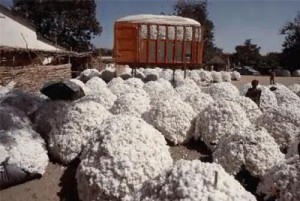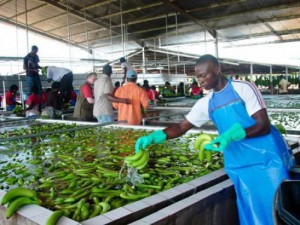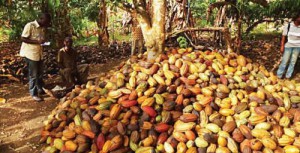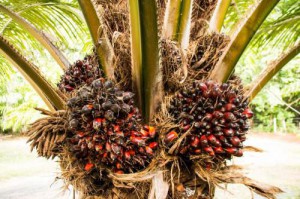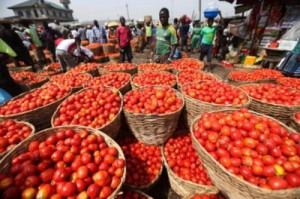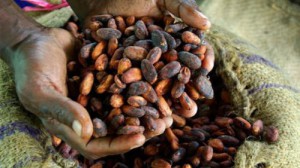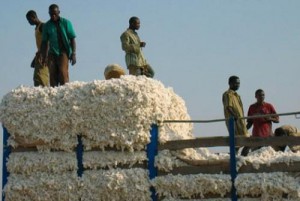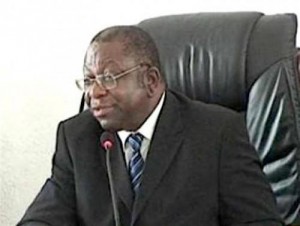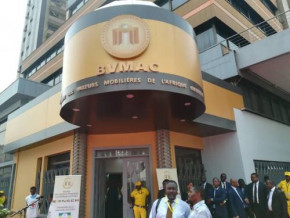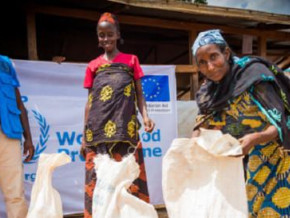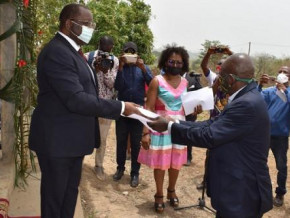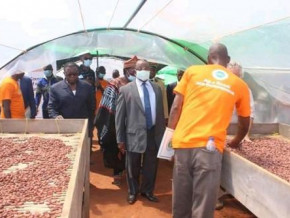
Cameroon: A Franco-Cameroonian partnership to develop cotton sector
Société de développement du coton (SODECOTON) has just signed a cooperation contract, for development of the cotton sector through research and training, with the Institute for Agriculture Research and Development (IRAD) (based in Yaoundé) and CIRAD, The French agricultural research and international cooperation organization.
The cooperation which will run from January 16,2018 to December 31, 2022, will be focused on points such as the plant material, the protection of crops against biological pest, agronomy, innovative technics, diversification of cultures (promotion of cashew notably) , training and vulgarization of agriculture; sources close to the partnership reveal.
During the first year of this partnership, scientific studies will be conducted on issues such as climate change, soil fertility management, and development of technic for a lesser use of chemicals and crop protection products as well as the sustainability of crops.
BRM
Cameroon: At October 2017, banana exports plummeted more than 20,600 tons due to bad weather conditions
At October 31, 2017, Cameroon’s banana producers exported 223,012 tons of banana, against 243,681 tons exported by the same date last year, official sources revealed.
This represents a decrease of more than 20,600 tons which producers attributed to the drop in national production also resulting from bad weather conditions.
Société des plantations du Haut Penja (Php) remains the leading banana exporter with 131,850 tons exported at the end of last October, down more than 9,000 tons compared to 2016.
Cameroon Development Corporation (CDC), the public agri-business, with 81,636 tons exported, experienced a 12,000 tons decrease.
However, the market’s Tom Thumb, Boh Plantations’s exports have increased over the reference period. Indeed, from 9,078 tons of banana exported on October 31, 2016, its exports have increased to 9,526 tons in 2017.
In view of the current exported volumes, producers will not be able to meet the 300,000 tons projected for this year, according to Cameroon’s banana producers’ association (Association bananière du Cameroun-Assobacam) said.
It should be reminded that Cameroon’s third most exported product is banana. It comes after oil which represents 40% of the exports and raw log and sawn timber (15%).
Brice R. Mbodiam
Cameroon: Afriland First Bank and Ecobank exit PIDMA (Investment and Development Project for Agricultural Markets)
Funded with FCFA50 billion by the World Bank, the Investment and Development Project for Agricultural Markets (PIDMA) may not reach its objectives. Indeed, this is what suggest the various challenges faced by PIDMA’s managers.
Indeed, recently, during the regular dialogue meeting for the project’s implementation, two of the partners involved decided to exit the PIDMA. These are Afriland First Bank and Ecobank Cameroon. “Remaining partners are SGC (Société Générale Cameroon) and BICEC (BPCE’s subsidiary),” said Thomas Ngue Bissa, coordinator of PIDMA, who also deplored "high interest rates" on loans granted farmers associations involved in the project. “The loans are not rapidly provided, in addition to their interest rates being extremely high,” he said.
Moreover, during the same meeting, it was found that the project’s beneficiaries are having a hard time fulfilling their contracts, due to organizational issues. Same goes from agribusinesses partnering the projects. “Some committed to purchase tons of maize at FCFA200/kg, and now that market price is FCFA160, they have withdrawn their orders, buying elsewhere,” PIDMA’s coordinator told the Quotidien gouvernemental.
Let it be recalled that the PIDMA which aims to boost local cassava, sorghum and maize outputs to supply agribusinesses, extends over the 2014-2019 period. Under the project, financing is provided to farmers and benefited cooperatives in the form of subsidies (50% of needed funding), while they are to personally provide 10% of the investment and secure remaining 40% from partnering banks.
BRM
Cameroon: 2017-2018 cocoa season kicks off with average farm gate price of FCfa 875 per Kg, compared to FCfa 1,400 in 2016-2017
Since the second half of the month of July 2017, the farm gate price of cocoa has weakened again, falling below FCfa 900. According to the reference price communicated as part of the sector information system (Système d’Information des Filières - SIF), this price has peaked at FCfa 875 since then, and remained there since the launch of the new season last 25 August in the Ntui area, Centre Region.
However, during the launch of the preceding campaign, between August and September 2016, the kilogramme of cocoa was trading for an average price of FCfa 1,400, according to statistics compiled by the Cocoa and Coffee Board; revealing a difference of FCfa 525.
This declining trend of cocoa prices, which has been running for several months now, is the consequence of an overproduction estimated at about 380,000 tons by ICCO, the umbrella body of world cocoa. To this overproduction, the same source points out, should be added, the decline in demand from processors.
In Cameroon, in order not to discourage producers used to selling their cocoa at between FCfa 1,000 and 1,500 per kilogramme for the last five years, the government decided, this year, to reduce the export charge by 50%, so that exporters with more means could better remunerate the producers.
BRM
Cameroon: Project for the development of agricultural value chains trying to appeal to producers in the Eastern region
The management of the Project for the Development of Agricultural Value Chains (PD-CVA, Projet de Développement des chaines de valeur agricoles) has just visited the agricultural region of Eastern Cameroon to generate interest among local farmers for this government project, meant to develop the plantain, pineapple and palm oil sectors.
Officially launched on 24 April 2017 in Yaoundé, the Cameroonian capital, this project is implemented in the Central, Littoral, South-Western and Eastern regions. With a global budget of FCfa 75 billion, PD-CVA received 77% of its funding from the African Development Bank and 21.5% from the State of Cameroon.
This project, which consists in providing financial and technical support to farmer organisations and other youth interested in agribusiness, is planning, over a period of 5 years, to boost the increase in production of oil palm bunches by 216,000 tons (for 17,500 tons of palm oil), against 240,000 tons for plantain and 10,000 tons for pineapple.
BRM
Cameroon: in a situation of falling prices, the 2016-2017 cocoa production drops by 14%, at 231,642 tons
During the last cocoa year, Cameroon’s production did not reach the 300,000 tons expected by operators in the sectors and the public authorities. It rather dropped by 14% (approximately 38,000 tons in absolute value), going from 269,495 tons for the 2015-2016 cocoa season to only 231,642 tons (less than the 232,530 tons harvested during the 2014-2015 season) at the end of the 2016-2017 cocoa year.
Michael Ndoping, Managing Director of the National Cocoa and Coffee Board (ONCC – Office National du Cacao et du Café) attributes this underperformance not to the discouragement among producers, but rather to illicit exports of Cameroonian cocoa, particularly to neighbouring Nigeria, as well as to the illegal operations carried out by some operators at the port of Douala.
As during previous years, Telcar Cocoa, local trading arm of the American firm Cargill, dominated exports, with slightly over 35% of the total beans sold, mainly to the Netherlands, first destination for Cameroonian cocoa beans (68%).
Regarding prices, the 2016-2017 cocoa year was the worst in the past five years. Between the beginning and the end of the season, the farm gate price per kilogram officially dropped by FCfa 500, going from FCfa1,400 to 900.
BRM
Heavy rains and exports raise tomato prices on Cameroonian market
In this month of August, an abundance of rain has led to rapid rotting of substantial quantities of tomatoes in the production areas in Cameroon, an agronomist notes. This situation concerning tomatoes for around one month, has created a reduction in supply, whose consequence is an increase in prices on the market.
Also, we observe, in certain markets in the country, a crate of tomatoes has practically doubled in price, if not more. According to households in the Cameroonian capital, for example, one needs to spend between FCfa 11 and 12,000 to buy a crate of tomatoes, which cost only FCfa 6,000 two months ago. The actual inadequacy of supply in the local market is accentuated by massive exports of this fruit to neighbouring countries such as Gabon or even Equatorial Guinea, where the prices are more lucrative than those charged locally, a trader in the capital points out.
BRM
Cameroon: between start and end of 2016-2017 cocoa season, Kg of cocoa beans experiences discount of FCfa 500
Contrary to previous years, cocoa farm gate prices in Cameroon have not been the most attractive. "The 2016/2017 season started, as with prior cocoa years, with lots of hope. In certain areas, the farm gate price posted FCfa 1400 in September and October 2016. The bad news of the market being confirmed during the months that followed, the price decrease was continuous, reaching an average level of FCfa 900 the Kg by the end of the season", the cocoa and coffee board (Conseil Interprofessionnel du Cacao et du Café - CICC) indicated.
According to the cocoa and coffee board, "this situation is attributable to over-production in the sector, and results from policies to increase production in all the producing countries, in view of a constant increase in price during the last 5 seasons. With stocks at the highest level and production that increased faster than grinding, the collapse in prices was inevitable".
Indeed, according to ICCO statistics, the key organization of the cocoa world, the last cocoa season in the world was characterised by excess production of about 380,000 tons. Coupled with the decline in demand from bean grinders, this situation led to a drop in world prices, with a notable impact in farm gate prices in producer countries.
In Cameroon, in order to maintain the purchasing power of producers, used to selling the Kg of cocoa at between FCfa 1000 and 1600 for the past five seasons, the government decided, for the new season, officially launched on 25 August 2017, to reduce the export charge by 50%. This measure, we learned, aims at offering a bigger margin to exporters, who in turn, should pay a fair price to the producers.
Brice R. Mbodiam
Cameroon is the 6th supplier of cotton to China, with 4,920 tons during first semester 2017
According to the statistics from the Chinese customs, revealed by Commodafrica, China imported 4,920 tons of cotton from Cameroon, between January and June 2017, including 648 tons in June only.
This African country thus ranks 6th in the list of raw cotton suppliers to China, far behind countries such as the USA, Australia or India.
At the African level, Cameroon is the 3rd supplier of China, behind Benin (16,837 tons during the first semester) and Sudan (13,030 tons), but ahead of Burkina Faso (4,755 tons).
As a reminder, based on the conclusions of a forum with the theme “Development, challenges and perspectives in the cotton sector in Cameroon and support from partners”, a meeting organised in May 2017, alongside the celebrations for the European Week, over 80% of the African cotton is processed in China at lower costs.
BRM
Cameroon: State provides cocoa sector with additional means to maintain producer purchasing power
In an official communiqué, published on the eve of the start of the 2017-2018 cocoa season, which will be officially launched this 25 August 2017 in the area of Ntui, in the Centre region, the Minister of Commerce, Luc Magloire Mbarga Atangana, announced that the new campaign will be marked by additional government support for operators in the cocoa sector.
"The government has taken a set of measures aimed at attenuating the impact of the decrease in prices (world cocoa) on the purchasing power of producers, notably in reducing by half the amount of the export charge (it goes from FCfa 150 to FCfa 75 per kilogram), and in providing the national office of cocoa and coffee (ONCC - Office National du Cacao et du Café) and the cocoa and coffee board (CICC - Conseil Interprofessionnel du Cacao et du Café) with additional means to stimulate the market entry of quality cocoa, synonymous with a better payment for producers", revealed this member of the Cameroonian government.
To these two bodies in charge of organising the cocoa and coffee sectors in Cameroon, Luc Magloire Mbarga Atangana recommended, during the new season, the generalisation of the "system of group sales" and to refer systematically "during the negotiations of prices, to the reference price published by the sector information system (Système d’Information des Filières - SIF)", a facility used to inform players in the sector, on a daily basis, of average market prices, through various communications channels.
The Minister of Commerce announced, furthermore, a strengthening of border controls with certain cocoa producing countries, in order to combat fraudulent exports of Cameroonian cocoa notably to neighbouring Nigeria.
BRM
Mags frontpage
- Most read 7 days
- shared 1 month
- read 1 month


